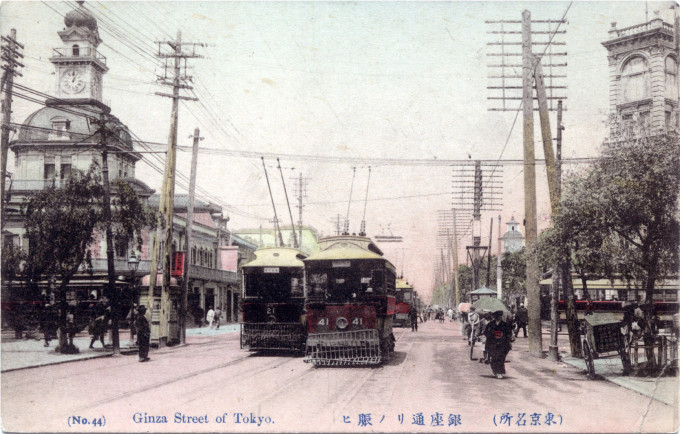
Ginza Crossing, c. 1910. Electric trams first coursed Ginza-dori in 1904 after the Tokyo Electric Railway laid tracks from Shimbashi to Ochanomizu via Ginza, Kyobashi and Nihonbashi. Passengers passed one prominent landmark at Ginza Crossing: the clock-towered Hattori building, home since 1894 of the Wako store and famed watch manufacturer K. Hattori & Co. that would, in 1937, be renamed Seiko Watch Co. The Hattori building would be demolished in 1921, replaced by the department store (Wako née K. Hattori) still standing to the present-day at the Ginza Crossing intersection. In homage to its predecessor, the new store was also fitted with a clock tower.
See also:
Hattori (Wako) Building, c. 1910
Mikimoto Pearls, Ginza, c. 1950
Ginza Methodist Church, c. 1915
Matsuya Department Store, Ginza
“The Ginza, a great artery of trade, that runs from Shimbashi station northwards toward Ueno Park, is destined to be one of the most magnificent streets in the Far East. Even the last two years have seen remarkable changes here. The recent visitor will remember a short stretch of broad street with willows on either side on an unaccustomed sidewalk, but this little touch of the modern extended only from Shimbashi to Kyobashi, the bridges that span canals at either end of the thoroughfare.”
– Tokyo, the leading city of the Far East, Overland Monthly, Vol. 55, C.E. Ferguson, January, 1910
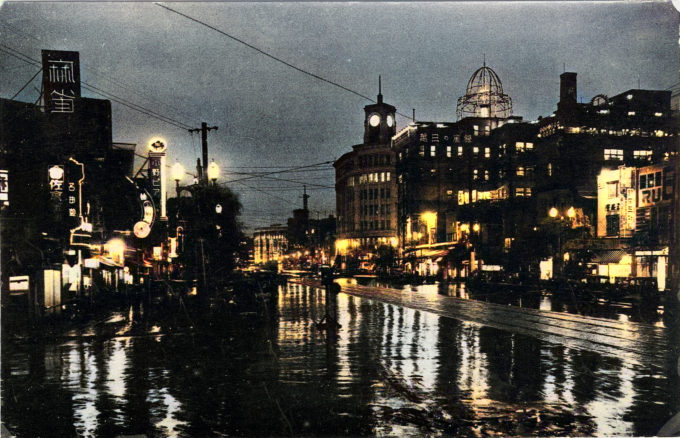
Neon lights at Ginza Crossing, c. 1930. The popular shopping district would be among Tokyo’s first to experience neon lighting. (Colorized)
If Asakusa and Yoshiwara represented Tokyo’s feudal past, then Ginza [Silver mint], in 1903, represented Tokyo’s modern future.
Technically a grouping of smaller neighborhoods, Ginza was — and still very much is — popularly referred to as Tokyo’s “Main Street”; a promenade stretching northward from Shimbashi on through Ginza Crossing and Kyobashi to Nihonbashi. (The thoroughfare is technically known as Chuo-dori [Central Road].) Along it are still found many of the city’s most prominent stores.
After a fire in 1872 leveled much of the district, Ginza was fashionably, and famously, rebuilt as a showpiece of Japan’s rapid modernization. Among the earliest influences was Western architecture. For decades, brick, stone and ferro-concrete were more widely used along Ginza’s famed boulevard than anywhere else in Japan.
As Ginza prospered, it became fashionable to walk its boulevard to window-shop [ginbura] or to sit in its cafès and beer halls … and even milk bars! It very much was not unlike walking down New York’s 5th Avenue around the same time. The Roarin’ ’20s brought to Ginza the same sense of liberating energy that could also be found on the streets of Paris. The moga [Modern girl, from mo-dan ga-ru] and the mobo [Modern boy, from mo-dan boi] were Tokyo companions of the Lost Generation making waves in post-WWI arts and literature before it all came crashing down with the Great Depression.
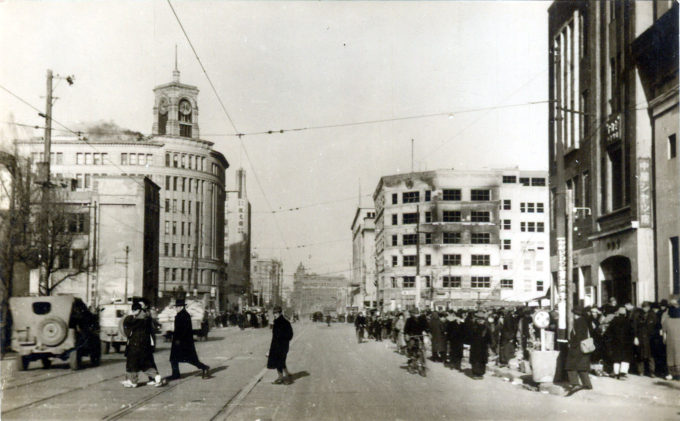
Ginza Crossing, c. 1945, looking northwest toward Kyobashi. The Wako department store is left; the burned-out shell of the Mitsukoshi Ginza department store is right. The Dai-Ichi Sogo building at Kyobashi is in the distance.
- Ginza “Main Street”, looking toward Ginza Crossing, c. 1910.
- Ginza-dori, with patriotic flags on store fronts, c. 1907.
- Ginza Street, looking north, c. 1920.
- Mikimoto Pearls, c. 1920.
- Ginza Dori, with pedestrians and willow trees, c. 1920.
- Ginza “modern girl” (mo-ga) and “modern boy” (mo-bo), c. 1930.
- Ginza Crossing, c. 1940, with the Wako building and clocktower at left..
- Wako building at Ginza Crossing, c. 1948, during the Occupation when the department store served as the US Army PX.


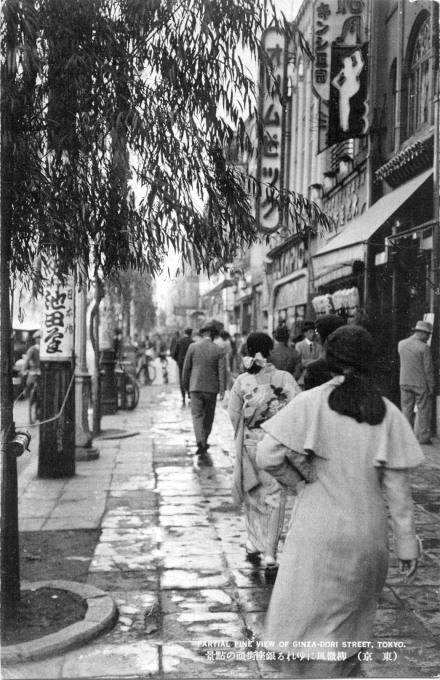
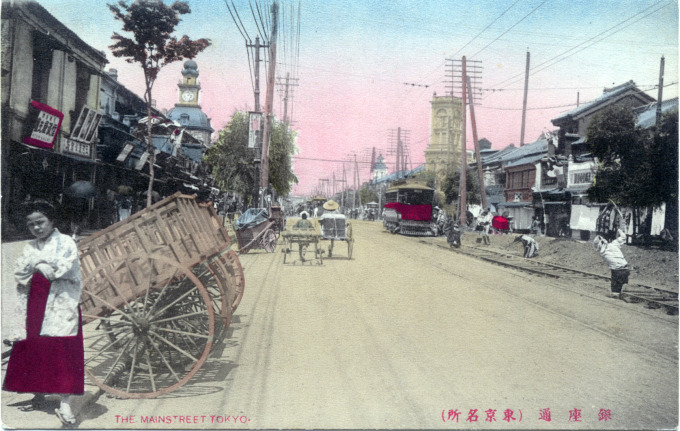
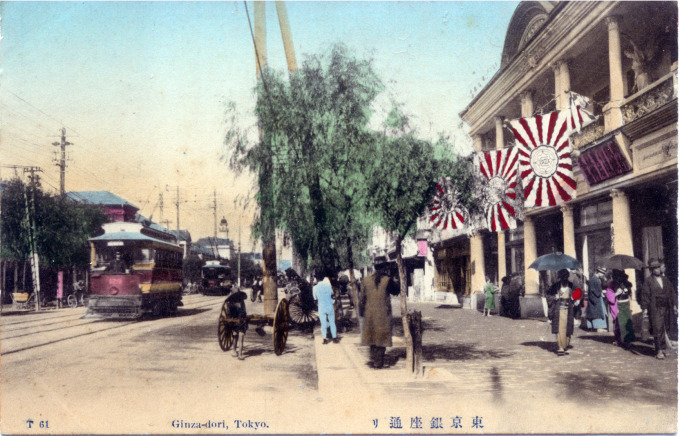
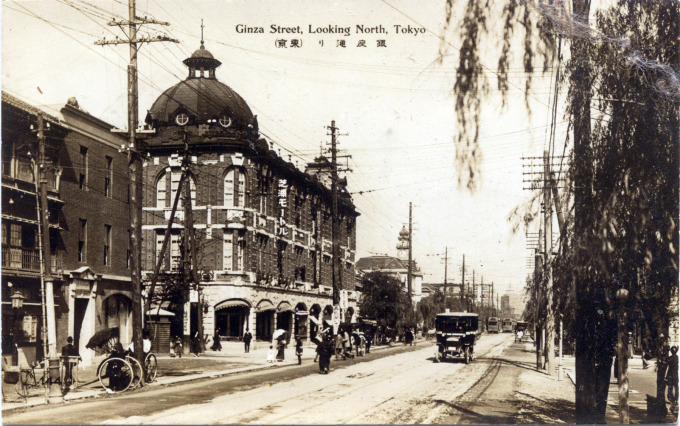
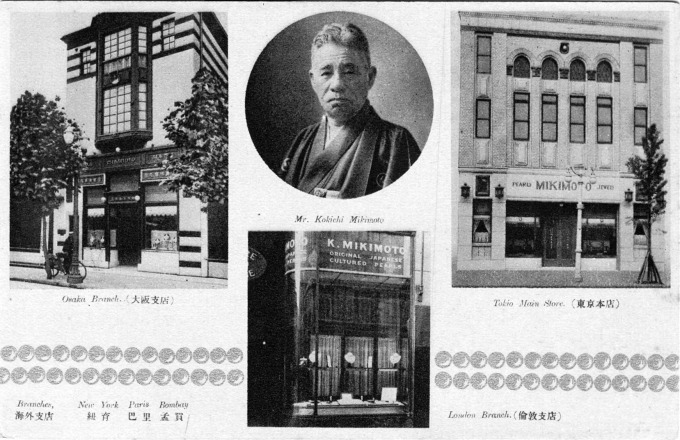
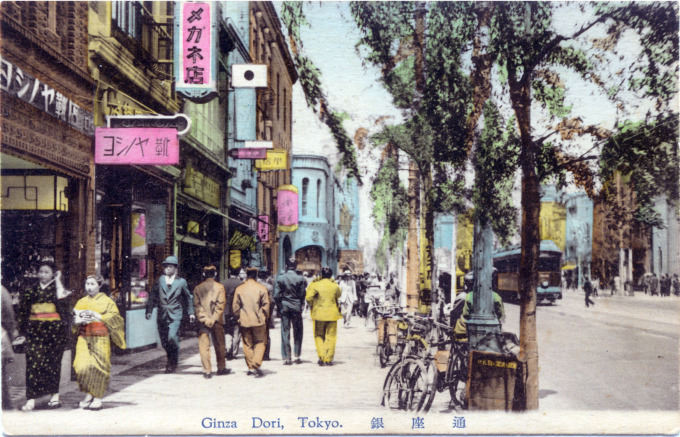
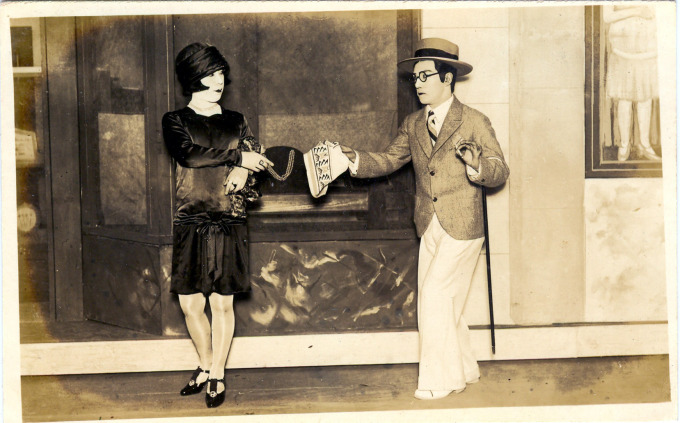
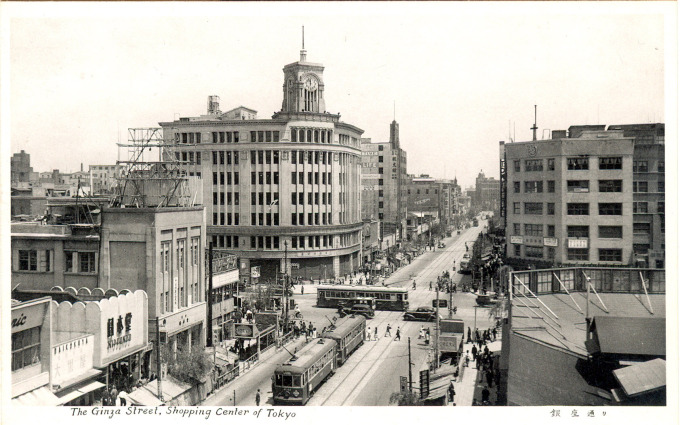
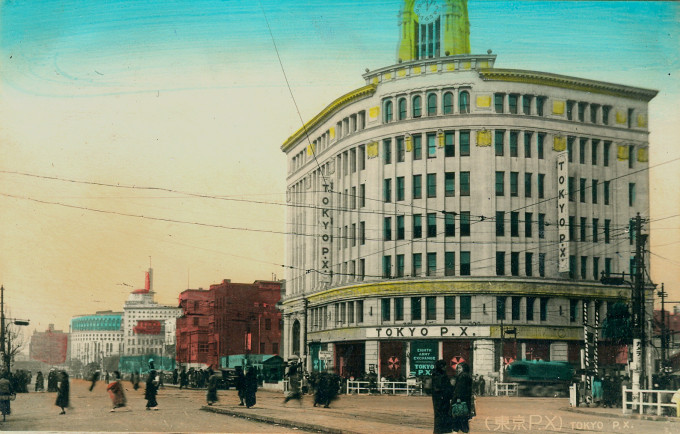
Pingback: Kyobashi | Old Tokyo
Pingback: Hattori (Wako) Building, Ginza. | Old Tokyo
Pingback: Post-war Ginza, 1945. | Old Tokyo
Pingback: SEIKO Museum Ginza – Ten Minute Tokyo
Pingback: French Legation, Tokyo, 1905. | Old TokyoOld Tokyo